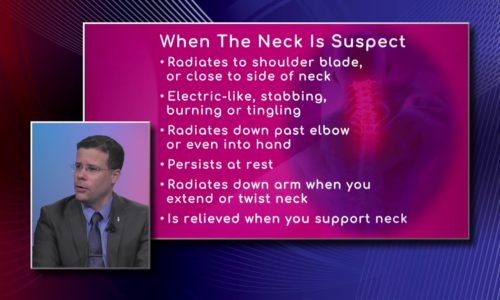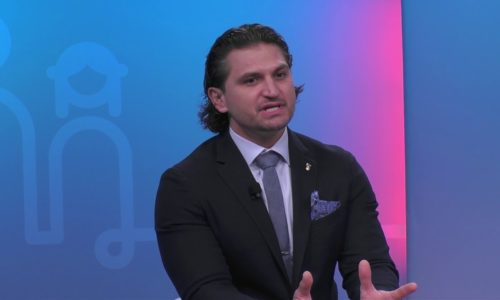Diagnosing Spinal Fractures |
Some of the things that you look for in a physical exam are humpback or kyphosis or tenderness over the affected spinal bone or bones. Jose Mena, Interventional Spine Specialist at Miami Orthopedics and Sports Medicine Institute, says normally for people with compression fracture the most common one will be the tenderness in the spine. They have to make sure that there is no neurological deficit, weakness or foot drop.
Theresa Pazionis, Orthopedic and Spine Surgeon at Miami Cancer Institute, explains she will conduct a gate exam to look at how the patients are walking and if they are able to stand and to sit.
Transcript
When a patient comes in you absolutely have to do some tests and examinations before you can make a diagnosis I want to show our viewers some of the things that you look for in a physical exam and you can add to this I’m sure there are other things that you do but you’re looking for a humpback correct or kyphosis tenderness over the affected spinal bone or bones anything else you’d like to add Dr. Mena Normally for people with compression fracture the most common one will be the tenderness over the in point tenderness over the or the center of the spine specifically at the level that they have also we want to make sure that there’s no neurological deficits meaning that when we do the examination there’s no weakness that there is no foot drop they have intact sensation they can feel really well so that will lead give us a breath that there is no significant compression of them of the nerve in the spine. Dr. Pazionis want to add something to that? So that’s generally a neurological examination and I’ll conduct and clinic I also do a gate exam to look at how the patients are walking and if they’re able to stand to sit so we have a number of measures that will also use time stand to sit which is how long it’ll take you to get up and walk ten seconds so understandably this is very important for people’s everyday lives and it’s more of a test of functionality And once they do that you clearly can see. I can see that they’re not able to stand up they’re using more arms to kind of help them stand people will oftentimes be holding their back and holding themselves in a posture where they’re they’re very clearly guarding their backs so you can really just get an idea of how uncomfortable the patient is unfortunately and also you look at their overall spinal alignment so this was mentioned before with the with the kyphosis or with the stooped posture that we were mentioning and that will give you a good indication of not just the one fracture but has this patient had multiple fractures in the past is this a patient who has had this problem for quite a while.








